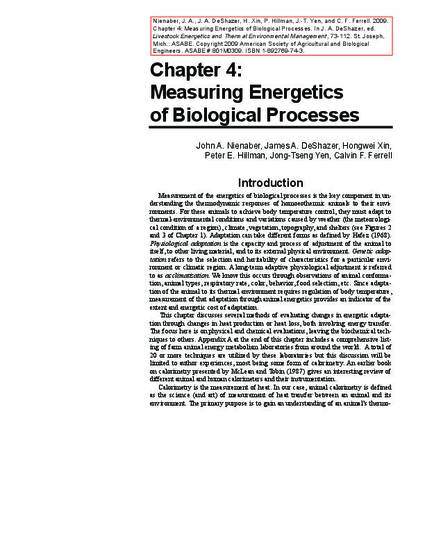
Measurement of the energetics of biological processes is the key component in understanding the thermodynamic responses of homoeothermic animals to their environments. For these animals to achieve body temperature control, they must adapt to thermal-environmental conditions and variations caused by weather (the meteorological condition of a region), climate, vegetation, topography, and shelters (see Figures 2 and 3 of Chapter 1). Adaptation can take different forms as defined by Hafez (1968). Physiological adaptation is the capacity and process of adjustment of the animal to itself, to other living material, and to its external physical environment. Genetic adaptation refers to the selection and heritability of characteristics for a particular environment or climatic region. A long-term adaptive physiological adjustment is referred to as acclimatization. We know this occurs through observations of animal conformation, animal types, respiratory rate, color, behavior, food selection, etc. Since adaptation of the animal to its thermal environment requires regulation of body temperature, measurement of that adaptation through animal energetics provides an indicator of the extent and energetic cost of adaptation.
Available at: http://works.bepress.com/hongwei_xin/33/

This book chapter is from James A. DeShazer, ed, Livestock Energetics and Thermal Environmental Management, 73–112. St. Joseph, MI: ASABE, 2009.